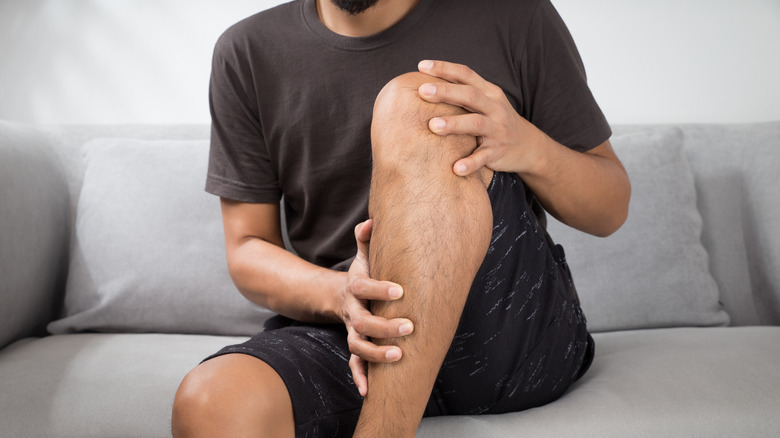The Unexpected Reason Your Body Hair Looks Like A Corkscrew
Strands of body hair that twist and turn aren't unusual. The armpits, chest, or genitals are examples of areas where a person may find these curlier strands of hair. It's no accident, either. HuffPost reports that curly pubic hair served early humans by trapping in mate-attracting pheromones, which, believe it or not, is the same reason we also have hair on our butts. Although our hair's color, texture, and density is largely the product of our genes, body hair that coils like a corkscrew may alternatively indicate a severe vitamin C deficiency, also known as scurvy, according to updated 2023 research published in StatPearls.
To name a few of its many functions, vitamin C supports the health of our hair, skin, and bones, and helps keep our cells safe from free radical damage. Predominantly associated with malnutrition, prevalence rates for vitamin C deficiency stand at a little over 7% in the U.S., but are significantly higher in other parts of the world. People who smoke or have a low intake of fruits and vegetables may be more vulnerable to the condition, as well as those with certain health conditions, such as food allergies, type 1 diabetes, eating disorders, or malabsorption issues.
Corkscrew hairs are a sign of vitamin C deficiency
Along with gum bleeding and the presence of small, red-purple spots at the base of the hair follicle (known as perifollicular hemorrhages), corkscrew hairs are one of the main signs of vitamin C deficiency (via StatPearls). In a 2015 case report published in the Postgraduate Medical Journal, a white man in his late 30s with existing physical and mental health conditions sought emergency care for symptoms of rash, weakness, and fatigue. For half a year, the patient had eaten only rice, beans, carrots, and corn. Diagnosed with scurvy, the man was found to have strands of corkscrew and swan neck body hair, among other symptoms.
Collagen is a protein that supports the health of our hair, but corkscrew hairs occur when collagen synthesis is defective, and are a tell-tale sign of vitamin C deficiency. With treatment, however, corkscrew hairs often resume their original state within a month.
Treatment and prevention of vitamin C deficiency
While treatment for vitamin C deficiency will be determined on a case-by-case basis, it largely involves supplementation for a period of approximately one to three months (via StatPearls). Adults may be given anywhere between 500 and 1,000 milligrams (mg) of vitamin C daily, with children potentially receiving up to 300 mg daily. According to the National Institutes of Health (NIH), the recommended daily intake for vitamin C is 75 mg for women and 90 mg for men. Baked potatoes, Brussels sprouts, strawberries, and oranges are a few of the many foods packed with vitamin C that one can eat to help ensure we're getting plenty of the essential nutrient. At the same time, you'll also want to be mindful of signs that you may be getting too much vitamin C. For vitamin C deficiencies related to a health condition, treatment will largely be focused on the underlying condition.
While maintaining adequate vitamin C intake is one way to protect ourselves against a deficiency, researchers have also found low socioeconomic status, food insecurity, and limited availability of healthy foods to all be associated with an increased risk for the condition. As a result, researchers have emphasized the importance of increasing public awareness, as well as the need for support services for individuals facing barriers to healthcare access and food insecurity.


